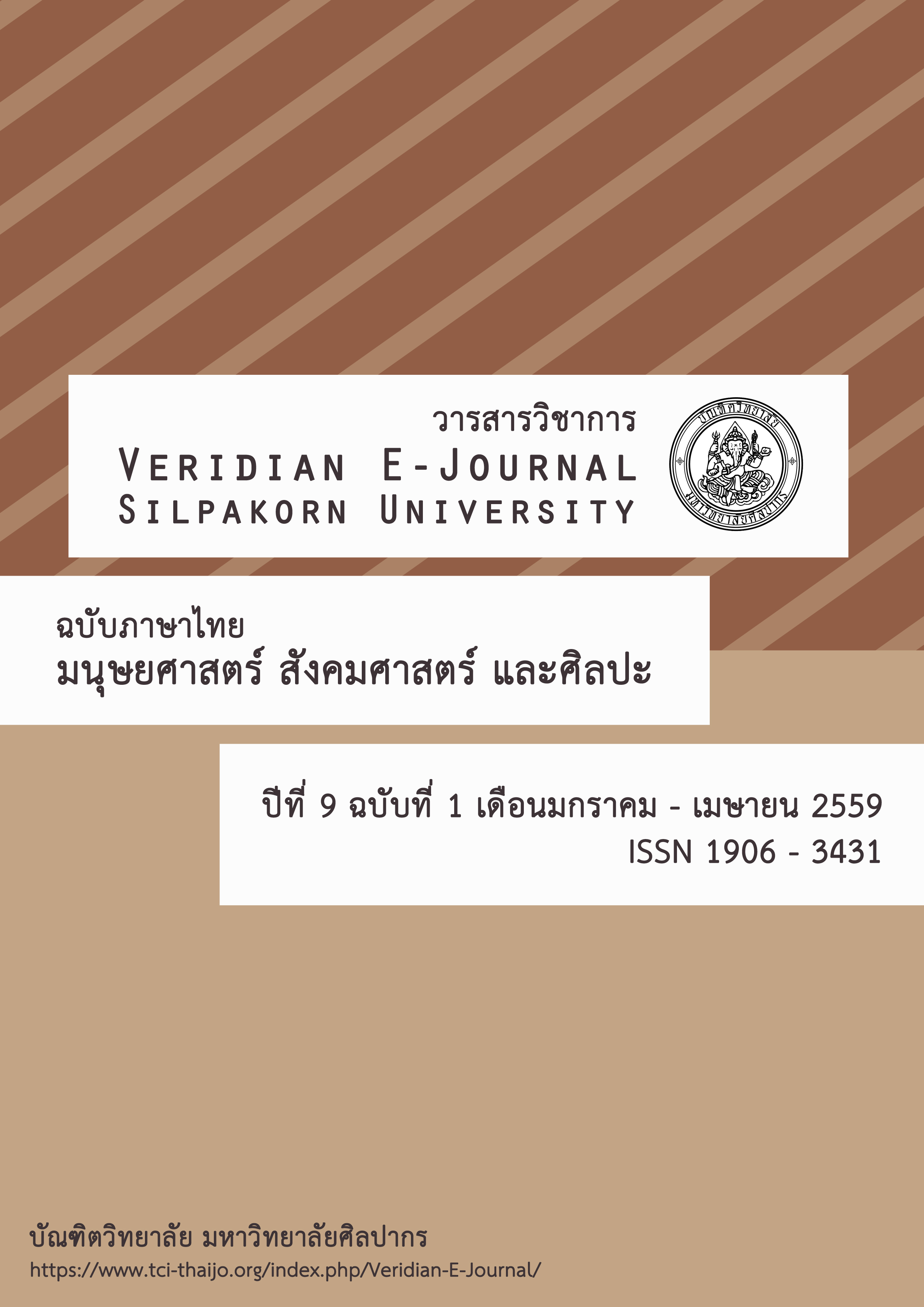การประเมินหลักสูตรศึกษาศาสตรมหาบัณฑิต สาขาวิชาการสอนภาษาไทย คณะศึกษาศาสตร์ มหาวิทยาลัยศิลปากร
Main Article Content
Abstract
บทคัดย่อ
การวิจัยประเมินหลักสูตรศึกษาศาสตรมหาบัณฑิต สาขาวิชาการสอนภาษาไทย คณะศึกษาศาสตร์ มหาวิทยาลัยศิลปากร ครั้งนี้ มีวัตถุประสงค์เพื่อ 1) ประเมินหลักสูตรศึกษาศาสตรมหาบัณฑิต สาขาวิชาการสอนภาษาไทย 2) ศึกษาแนวทางการพัฒนา ปรับปรุงหลักสูตรศึกษาศาสตรมหาบัณฑิต สาขาวิชาการสอนภาษาไทย การวิจัยนี้เป็นการวิจัยประเมินผลโดยใช้รูปแบบซิป (CIPPI Model) ของแดเนียล แอล สตัฟเฟิลบีม ประชากร คือ ผู้ทรงคุณวุฒิ คณาจารย์ บัณฑิต นักศึกษาปัจจุบัน ผู้ใช้บัณฑิต ผู้บริหารคณะศึกษาศาสตร์ และเอกสารที่เกี่ยวข้อง เครื่องมือที่ใช้เก็บรวบรวมข้อมูล คือ แบบสัมภาษณ์ และแบบสอบถาม การวิเคราะห์ข้อมูลใช้สถิติค่าเฉลี่ย ( ) ส่วนเบี่ยงเบนมาตรฐาน (S.D.) และการวิเคราะห์เนื้อหา ผลการวิจัยแยกตามองค์ประกอบการประเมินดังนี้
1. ด้านสภาวะแวดล้อม (Context) แผนการดำเนินงานของสาขาวิชาเหมาะสมทั้งด้านการพัฒนาคณาจารย์และพัฒนาสาขาวิชา สาขาวิชามีจุดแข็งเรื่องหลักสูตร ความรู้ความสามารถของคณาจารย์ ซึ่งเป็นที่ยอมรับของกลุ่มวิชาชีพที่เกี่ยวข้อง
2. ด้านปัจจัยนำเข้า (Input) มีความเหมาะสมในระดับมากที่สุด ในด้านวัตถุประสงค์ของหลักสูตร คุณสมบัติของผู้เรียน/การสอบคัดเลือก และคุณสมบัติอาจารย์ที่สอน/อาจารย์ที่ปรึกษา
3. ด้านกระบวนการ (Process) มีความเหมาะสมในระดับมากที่สุดทั้งทางด้านพฤติกรรมการจัดการเรียนการสอนของผู้สอน พฤติกรรมการเรียนรู้ของผู้เรียน การทำวิทยานิพนธ์ การจัดการเรียนการสอน และการให้บริการและการสนับสนุนการเรียนการสอน
4. ด้านผลผลิต (Product) มีความเหมาะสมในระดับมากที่สุด
5. ด้านผลกระทบ (Impact) ผู้ใช้บัณฑิตมีความพึงพอใจต่อการปฏิบัติงานของบัณฑิตในระดับมากที่สุด
Abstract
The objectives of the study, An Evaluation of Master of Education Program in Teaching Thai Language, Faculty of Education, Silpakorn University, were 1) to evaluate the Master of Education Program in Teaching Thai Language; and 2) to consider ways to improve the Master of Education Program in Teaching Thai Language. This program evaluation was based on the CIPPI Model of Daniel L. Stufflebeam’s. The sample comprised of experts, lecturers, graduates, current students, employers/advisors, faculty of education. Relevant documents were also collected. The research instruments used for this study were interview forms and survey questionnaires. The mean, standard deviation of items, and content analysis were used to analyze the data. The research findings mainly separated into 5 parts were as follows:
1. Context: The operation planning of the Teaching Thai section was appropriate in both professional development and organization development. Highly experienced and expertise lecturers were the strength of the section.
2. Input: According to the rating scale on the survey questionnaires, the items which were scored at the highest levels were objectives of the program, students’ qualification, entrance exam, lecturers’ quality and advisors’ quality. All other items were rated at high levels.
3. Process: According to the rating scale on the survey questionnaires, the items which were scored at the highest levels were the performance of the lecturers, the performance of the students, thesis, learning management and factors for support learning.
4. Product: All of items on the survey questionnaires were scored at the highest levels.
5. Impact: The employers or supervisors were satisfied with the performances of graduates at a highest level.

